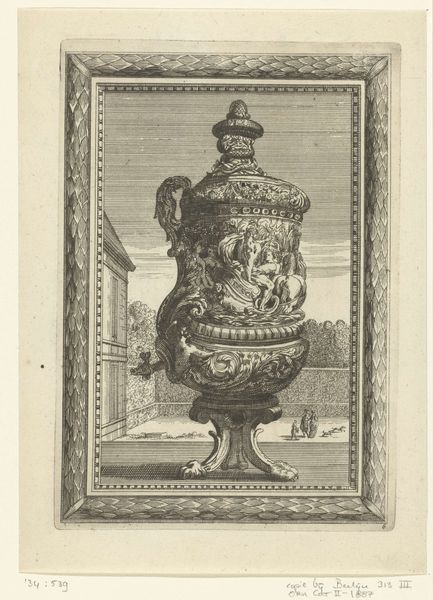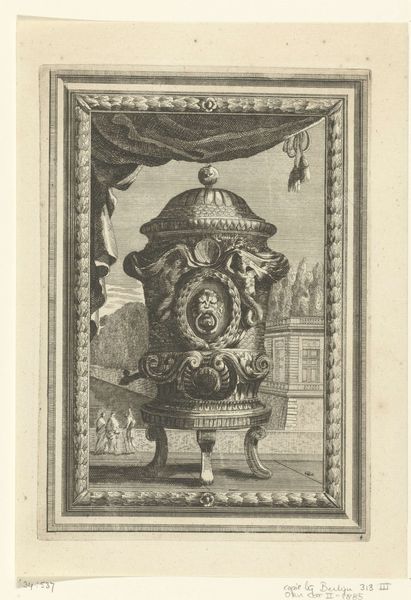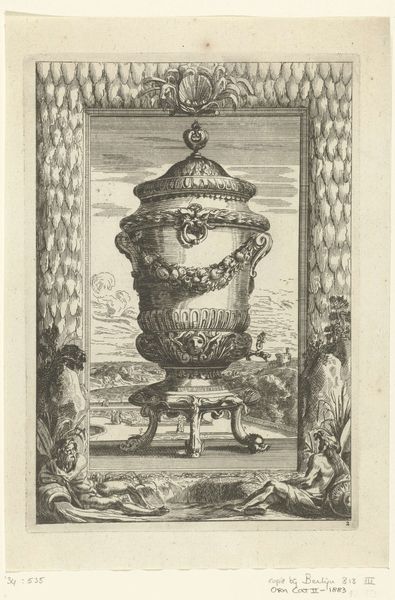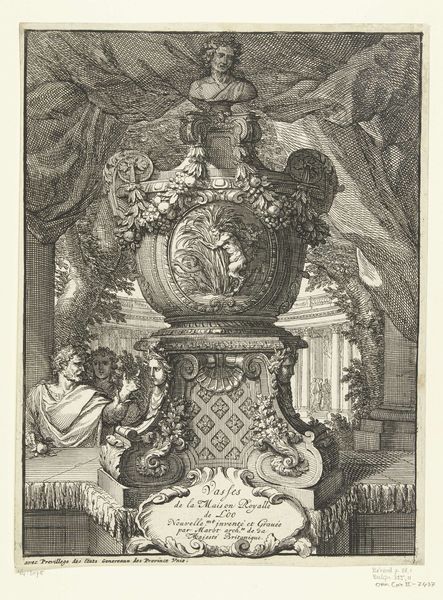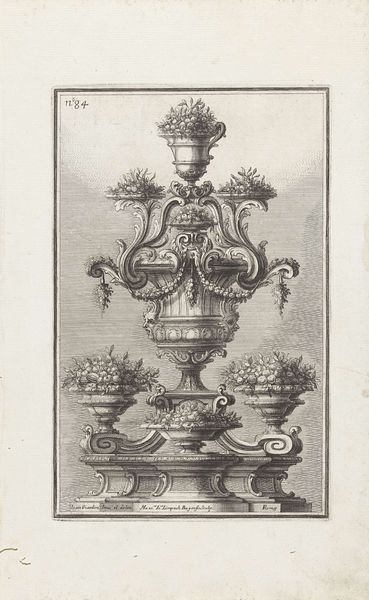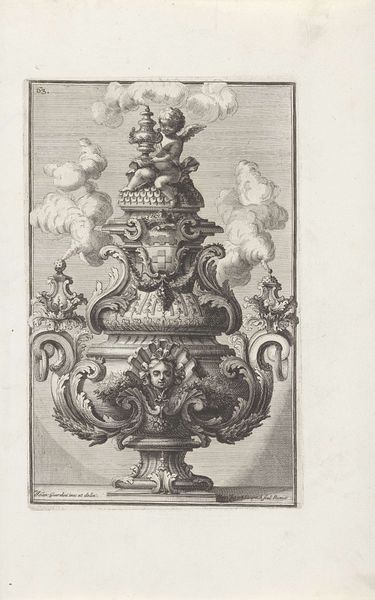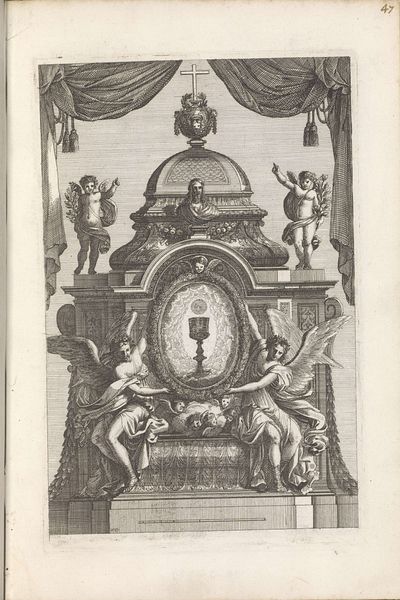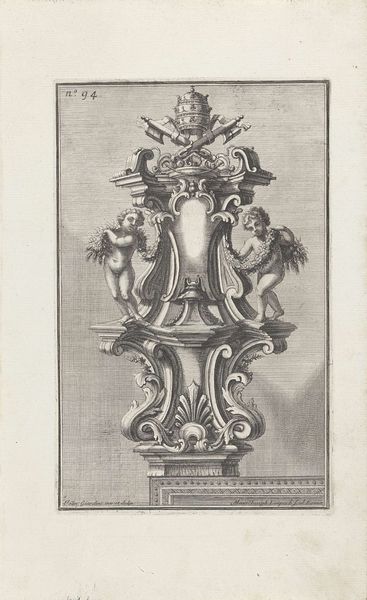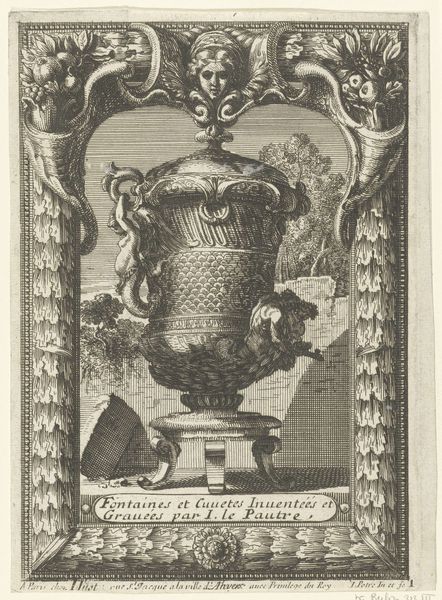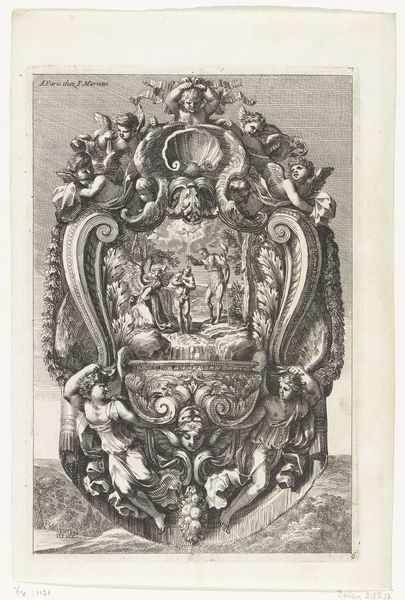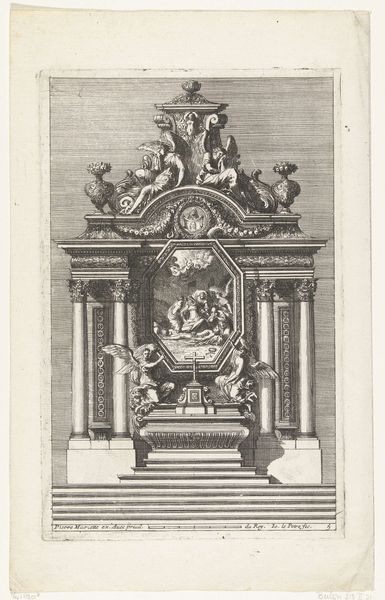
print, engraving, architecture
#
baroque
# print
#
history-painting
#
engraving
#
architecture
Dimensions: height 212 mm, width 148 mm
Copyright: Rijks Museum: Open Domain
Editor: We’re looking at "Waterfontein met twee dolfijnen bovenop," or "Fountain with two dolphins on top," an engraving from circa 1655 to 1678, currently housed at the Rijksmuseum. It depicts a highly ornate fountain, seemingly within a courtyard. The level of detail is incredible, but it feels more like a design proposal than a representation of something that actually exists. What do you see in this piece? Curator: It’s fascinating to view this through the lens of the social and institutional forces at play in the 17th century. These prints often served as aspirational marketing, promoting ideas of grandeur and reinforcing the power structures of the elite. Consider the historical context: the Dutch Golden Age, a period of immense wealth and colonial expansion. The inclusion of dolphins, often associated with classical mythology and maritime power, wouldn’t be accidental. It connects Dutch prosperity to established notions of power. Editor: So, you're saying it's not just a picture of a pretty fountain but a symbol of Dutch ambition and power? How would this image function in the public sphere at the time? Curator: Precisely. Think of these prints as a form of visual propaganda. They circulated amongst the wealthy, of course, influencing taste and defining what was considered desirable, what was proper to acquire. But they also trickled down to other levels of society. These engravings played a role in constructing a shared vision of Dutch identity. They celebrated an identity tied to wealth and overseas dominance. Does that begin to help explain its role and public function at the time? Editor: Yes, it does. Seeing it as a piece of carefully constructed visual propaganda shifts my entire perspective. It’s amazing to think how images, even something seemingly as simple as a fountain design, can carry such significant social and political weight. I'll never look at engravings the same way. Curator: And that’s precisely the value in examining art through its socio-political history. We move beyond aesthetic appreciation to understand its impact on culture and society.
Comments
No comments
Be the first to comment and join the conversation on the ultimate creative platform.
